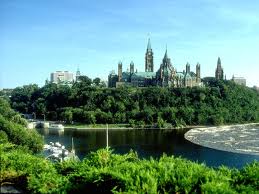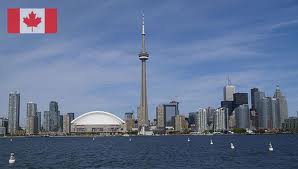

Study at Canada
Location and Geography
Covering most of the northern part of the North
American continent,
Society and culture
Today,

In
In addition to post-secondary options, 
University:
Canadian universities offer high-quality
education and are very well respected around the
world. A degree from a Canadian university holds
substantial prestige, thus making
University degrees are offered at three successive levels – bachelor's, master's, and doctoral. Bachelor's degrees normally require three or four years of full-time study, depending on the province. An honours bachelor's degree involves a higher degree of concentration in the major subject, as well as a higher level of academic achievement, and in some cases, an additional year of study. A master's degree typically requires two years of study after completion of either a general or an honours baccalaureate program.
Virtually all Canadian universities are public institutions, which is the main difference between Canadian and American universities.
College:
A community college is a public post-secondary educational institution that offers a variety of programs to high-school graduates and adults seeking further education or employment training. Public colleges offer vocational programs in a wide range of professional and technical fields including business, health, science, agriculture, applied arts, technology, skilled trades, and social services.
Diplomas are awarded for the successful completion of two- or three-year programs, while certificate programs most often take one year to complete.
Many colleges offer university transfer programs, providing the first two years of a university undergraduate program. Many also offer bachelor's and applied degree programs.
Colleges are much cheaper than universities and more career-oriented.
International Students
In 2008–09, there were over 80,000 international
students in Canadian universities, constituting
7.7% of the total enrolment. The main countries
from which students came were China, the U.S.,
France, India, and South Korea.
International students applying directly from high school to a university or college in Canada should begin planning early, since universities in Canada or particular programmers within a university can be competitive.
Due to the different laws and regulations in each province the correct visa information can be obtained by visiting the Education in Canada website.
Students who want to work while studying in Canada must be registered as full-time students at an eligible post-secondary educational institution participating in the Off or On-Campus Work Permit Program. For part-time work on campus for the first six months of studies (maximum 20 hrs per week), students must prove that they are in good academic standing and are able to manage their studies first and foremost. Part-time on- and off-campus work permits are available after six months of studies provided students possess satisfactory academic standing. Work placements (co-op) are often available in the programs of study. Students can get access to up to three years of full-time employment in Canada after graduation.